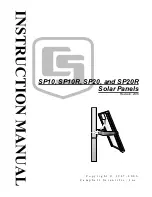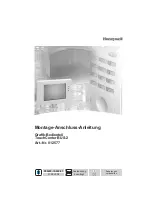
12
CONNECTING MULTIPLE SOLAR PANELS
Additional solar panels can be connected together. Different configurations produce different voltages and
currents. For example: Two panels connected in series, will double the voltage. Two panels connected in
parallel will double the current.
Note: When connecting multiple solar panels in arrays always use the same type and size!
Blocking & Bypass Diodes – Shading
Where multiple solar panels are used, diodes are necessary to ensure solar panels perform as efficiently as
possible. If one of the solar panels is shaded it will begin to discharge (draw power from the system). To
overcome this effect, diodes are placed in the circuit. See Fig. 6 & Fig. 8.
Two Panels in Series 24V Installation
You will also need:
• 24V Solar Controller
• Suitable cable. (If solar panel is within 3 metres from the battery use 4mm cable, within 6m use 5mm cable
and within 9 metres use 6mm. It is not recommended to run longer than 9m.)
• 10A Fuse or circuit breaker
• 2 diodes (Projecta P/No. SPPDIODE) required on SPP20 & SPP40 as bypass diodes. Bypass diodes are built in
on SPP60, SPP80, SPP120 & SPP135.
1. Connect a fuse or circuit to the positive terminal of the battery bank, (As near to the battery as possible) refer
to Fig. 6. Leave the fuse out.
2. Connect a cable from the fuse or circuit breaker to the solar controllers’ positive terminal.
3. Connect a cable from the battery bank’s negative terminal to the solar controller’s negative terminal.
4. (SPP20 & SPP40 Only) Fit one bypass diode per solar panel between the negative and positive terminals inside
the solar panel’s junction box. Be sure to connect the end of the diode with the white band to the positive
terminal. Refer to Fig 7 opposite page.
5. Connect a cable from Solar Panel No.1’s positive terminal to Solar Panel No.2’s negative terminal to create
a solar panel array.
6. Connect a cable from the solar array’s negative terminal to the solar controller’s negative terminal.
7. Connect a cable from the solar array’s positive terminal to the solar controller’s positive terminal.
8. Insert fuse.
SPP20-135 Instruction Manual_Layout 1 19/01/12 12:47 PM Page 13






































